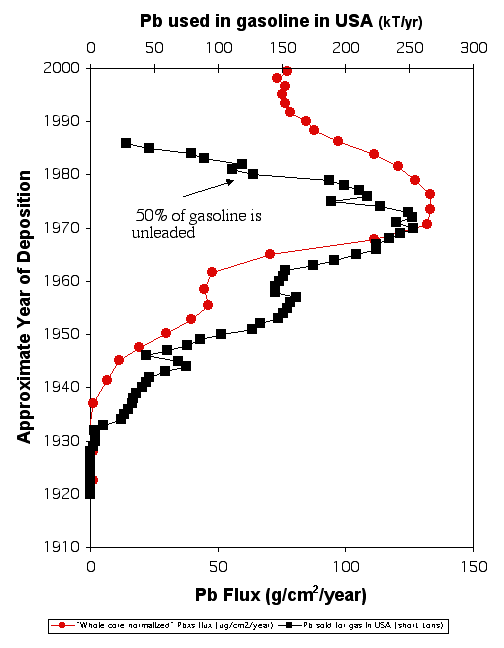
Radionuclide and trace metal analyses were made on fine-grained sediment cores from Van Cortlandt Park Lake. Located in the Bronx, the lake is surrounded on three sides by three major highways from which it receives significant runoff. Maximum concentrations of Cu, Pb, Zn, Cd and Sn in the lake sediments were elevated over uncontaminated background levels by a factor of 200, 56, 18, 85 and 4 respectively. Chronologies of fluxes of contaminant Cu, Pb, Zn and Cd were investigated and possible sources discussed. Lead showed maximum fluxes between the mid-1960s and late 1970s, consistent with the maximum use of leaded gasoline in the U.S.A. Cadmium and zinc fluxes showed increases coincident to construction and renovation of the surrounding highways. Copper had a maximum flux in the early 1950s and has since decreased and remained relatively constant to present day. We postulate that Pb, Zn and Cd trends observed in dated sediment cores from Van Cortlandt Park Lake can be used to describe the characteristic metal signature of road runoff through time. At this coring site, the radionuclide-normalized, contaminant Pb inventory was 45 g m-2 with the majority of this cumulative contaminant Pb accumulating over the last 50 years. Extrapolating the data from one core at this site, it was estimated that a minimum of 73% of the contaminant Pb loading of Van Cortlandt Park Lake was derived from leaded gasoline.

The limits for lead (Pb) in gasoline were 0.5 grams per gallon as of July 1, 1985, and 0.1 grams per gallon on January 1, 1986. As the amount of lead used in gasoline dropped, the flux of lead into the sediments of Van Cortland Park Lake dropped as well, but did not return to pre-highway levels, implying other sources are still supplying lead to the lake.
Go to Science Research Projects.
Go to Learning Objectives of Research Project.
Return to E&ESJ home page.
Last updated: 18 December 2000, KAK.